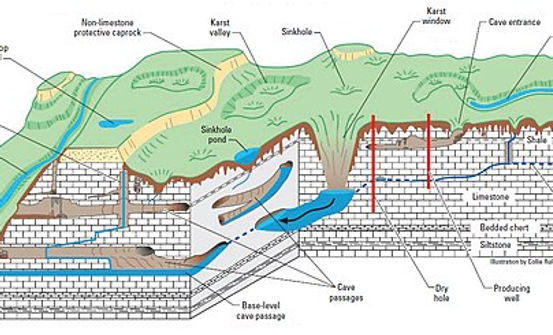
Karst:
Is a terrain sculpted by water. Karst is a kind of terrain where the terrain is mostly changed by the dissolving action of water on carbonate bedrock, usually limestone, dolomite, or marble.
This process is geological in nature, which takes thousands of years and results in unusual features ranging from sinkholes, vertical shafts, disappearing streams, and springs, to complex underground drainage systems and caves.
How Karst is Formed:
Karst formation involves a process which is referred to as the carbon dioxide cascade. As rain falls through the atmosphere, it picks up carbon dioxide which dissolves in the droplets. When the rain hits the ground, it drains through the soil and picks up more carbon dioxide to form a weak solution of carbonic acid. The water naturally finds any cracks or crevices in the rock.
After a while, the carbonic acid in the bedrock starts to dissolve the carbonate in the bedrock. Openings in the bedrock increase in size and an underground drainage system begins to take shape which allows more water to flow through. This increases the formation of the karst. At a certain point this leads to the development of caves.




